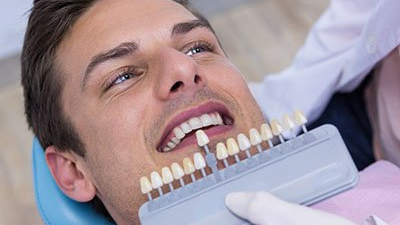When most people think about visiting the dentist, the image that comes to mind is a chair, a bright light, and maybe the sound of a drill. But behind that scene is a toolkit filled with instruments that make modern dentistry possible. From the simple mirror to advanced imaging devices, each tool has a role in diagnosing, treating, and protecting oral health. Without them, dentistry as we know it wouldn’t exist. What surprised me when I began learning more about these instruments is how many patients have never heard of the smaller, behind-the-scenes tools that actually drive most procedures. For instance, items like dental burs may not be something a patient notices, but they’re critical in shaping teeth, preparing cavities, and making restorative dentistry precise. These unsung heroes are what transform a dental visit from routine to effective.
The Mirror: The Starting Point
The simplest yet most powerful tool in a dentist’s kit is the mirror. It’s small, circular, and seems straightforward, but it allows dentists to see areas of the mouth that would otherwise be impossible to check. With it, a dentist can spot early signs of decay, plaque, or gum inflammation that patients might not notice until it’s too late. The mirror is also about more than vision—it reflects light into hard-to-see areas, giving clarity during complex procedures.
Explorers and Probes: Detecting What Eyes Can’t See
Another set of essentials are the explorers and probes. These sharp, thin instruments are designed to detect cavities, rough surfaces, or irregularities in enamel. Dentists use them to assess whether a tooth surface is healthy or compromised. Periodontal probes, in particular, measure the depth of gum pockets, which helps determine if a patient has gum disease. Though they look simple, these tools provide the data needed to plan treatments effectively.
Suction Devices: Comfort and Cleanliness Combined
A procedure can’t move forward without suction devices. They keep the mouth clear of saliva, blood, and debris. For patients, this means less discomfort and fewer interruptions. For dentists, suction allows for a clean, visible workspace where precision can flourish. High-volume evacuators and saliva ejectors are both used regularly, each playing a slightly different role depending on the treatment.
The Drill: Power and Precision
Perhaps the most recognized tool in dentistry, the drill, or handpiece, is what people often associate with treatment. It’s used for shaping teeth, preparing cavities, and smoothing restorations. What makes the drill truly effective, however, isn’t just the handpiece itself—it’s the attachments that come with it. This is where the variety of instruments hidden in a dentist’s toolkit really shines, showing how every detail matters in patient care.
Burs: The Hidden Workhorses
At the heart of many procedures are the cutting and shaping attachments that give the drill its versatility. These are the small, specialized instruments that allow dentists to cut enamel, remove decay, and prepare teeth with incredible precision. They come in different shapes, sizes, and materials depending on the task at hand. From polishing surfaces to grinding through tough enamel, these tools are what make treatments effective and efficient. Though patients rarely hear their name mentioned, they’re behind almost every successful restoration.
Forceps and Elevators: Managing Extractions
When teeth can’t be saved, extraction becomes necessary. Forceps and elevators are the instruments dentists rely on in these moments. They may look intimidating, but their design allows for careful removal of teeth with minimal trauma to surrounding tissue. Like every other tool in the kit, their purpose is not to cause pain, but to ensure that procedures are handled with accuracy and care.
Sterilization Tools: The Invisible Guardians
Behind every instrument a dentist uses lies a strict sterilization process. Autoclaves, disinfectants, and sealing systems ensure that every tool is safe before it touches a patient’s mouth. Infection control is as much a part of dentistry as diagnosis and treatment, making sterilization tools silent guardians of both patient and practitioner safety.
Why Patients Should Care About Dental Tools
Patients often underestimate the importance of these instruments. But the quality, maintenance, and precision of dental tools directly affect treatment outcomes. A crown that fits perfectly, a cavity filled seamlessly, or a tooth extracted smoothly—all of these successes depend on having the right tools at hand. When patients understand this, they gain a new appreciation for the work their dentist performs and the tools that support it.
The Future of Dental Instruments
Just like the rest of healthcare, dental tools are evolving. Digital scanners, laser technology, and advanced imaging devices are already transforming how procedures are done. But the essentials—mirrors, probes, drills, and their attachments—continue to be the foundation. As technology grows, the role of these instruments may shift, but their importance remains constant.
Conclusion
A dental office may look simple on the surface, but behind every procedure is a collection of tools designed for precision and care. From the smallest mirror to the specialized attachments used in drilling, each instrument is part of a larger system that keeps dentistry effective. These tools don’t often get the spotlight, but without them, dental professionals couldn’t provide the level of care patients rely on. The next time you’re in the chair, remember that the instruments you barely notice are the real heroes of your dental visit.







